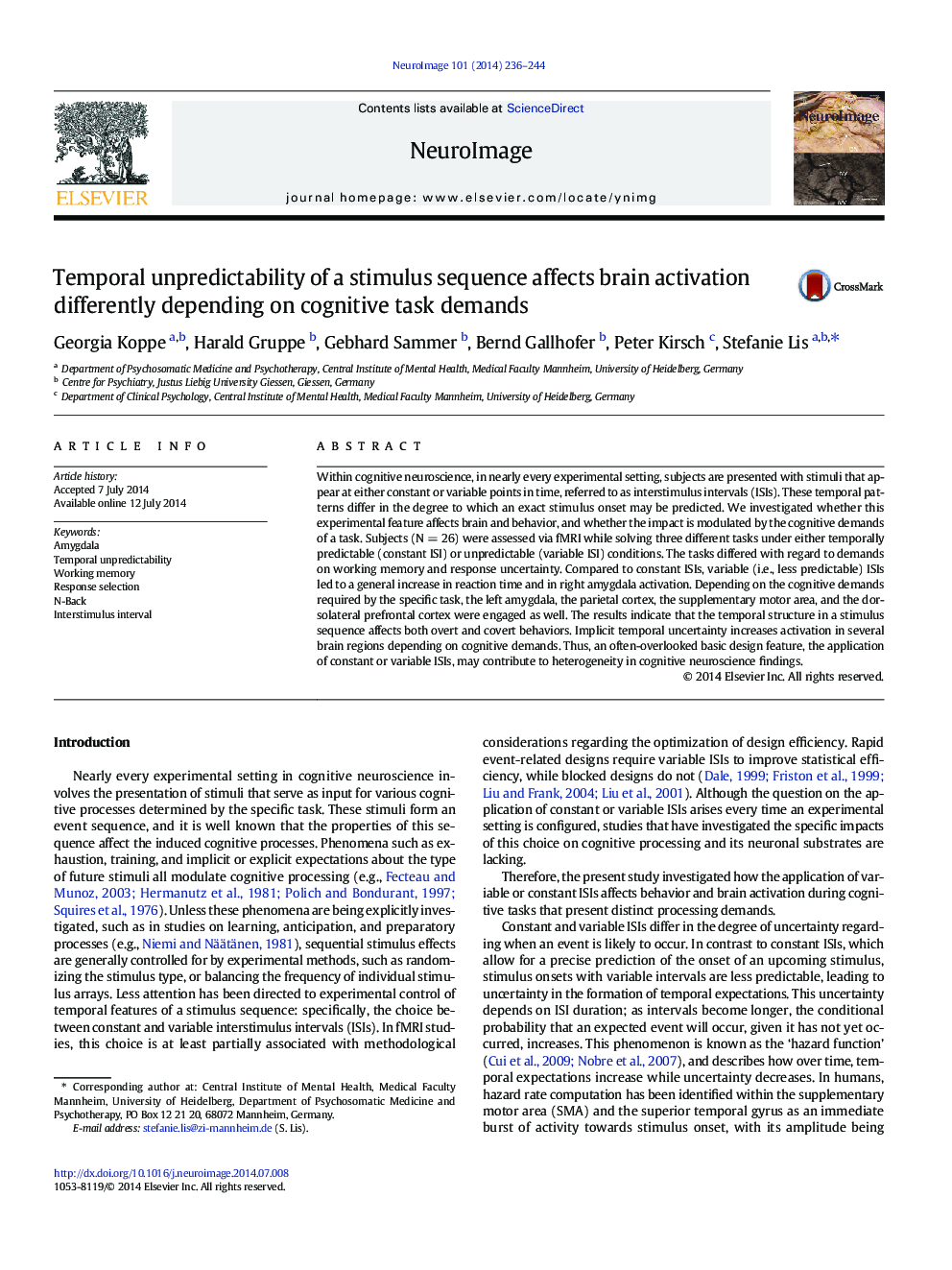| کد مقاله | کد نشریه | سال انتشار | مقاله انگلیسی | نسخه تمام متن |
|---|---|---|---|---|
| 6026289 | 1580905 | 2014 | 9 صفحه PDF | دانلود رایگان |
- Implicit temporal unpredictability, i.e. variable ISIs, increases brain activation.
- Temporal unpredictability accentuates right amygdala activation across all tasks.
- Effects of temporal unpredictability on brain activation depend on task demands.
- Demands on response uncertainty and working memory modulate the observed effects.
Within cognitive neuroscience, in nearly every experimental setting, subjects are presented with stimuli that appear at either constant or variable points in time, referred to as interstimulus intervals (ISIs). These temporal patterns differ in the degree to which an exact stimulus onset may be predicted. We investigated whether this experimental feature affects brain and behavior, and whether the impact is modulated by the cognitive demands of a task. Subjects (NÂ =Â 26) were assessed via fMRI while solving three different tasks under either temporally predictable (constant ISI) or unpredictable (variable ISI) conditions. The tasks differed with regard to demands on working memory and response uncertainty. Compared to constant ISIs, variable (i.e., less predictable) ISIs led to a general increase in reaction time and in right amygdala activation. Depending on the cognitive demands required by the specific task, the left amygdala, the parietal cortex, the supplementary motor area, and the dorsolateral prefrontal cortex were engaged as well. The results indicate that the temporal structure in a stimulus sequence affects both overt and covert behaviors. Implicit temporal uncertainty increases activation in several brain regions depending on cognitive demands. Thus, an often-overlooked basic design feature, the application of constant or variable ISIs, may contribute to heterogeneity in cognitive neuroscience findings.
Journal: NeuroImage - Volume 101, 1 November 2014, Pages 236-244
